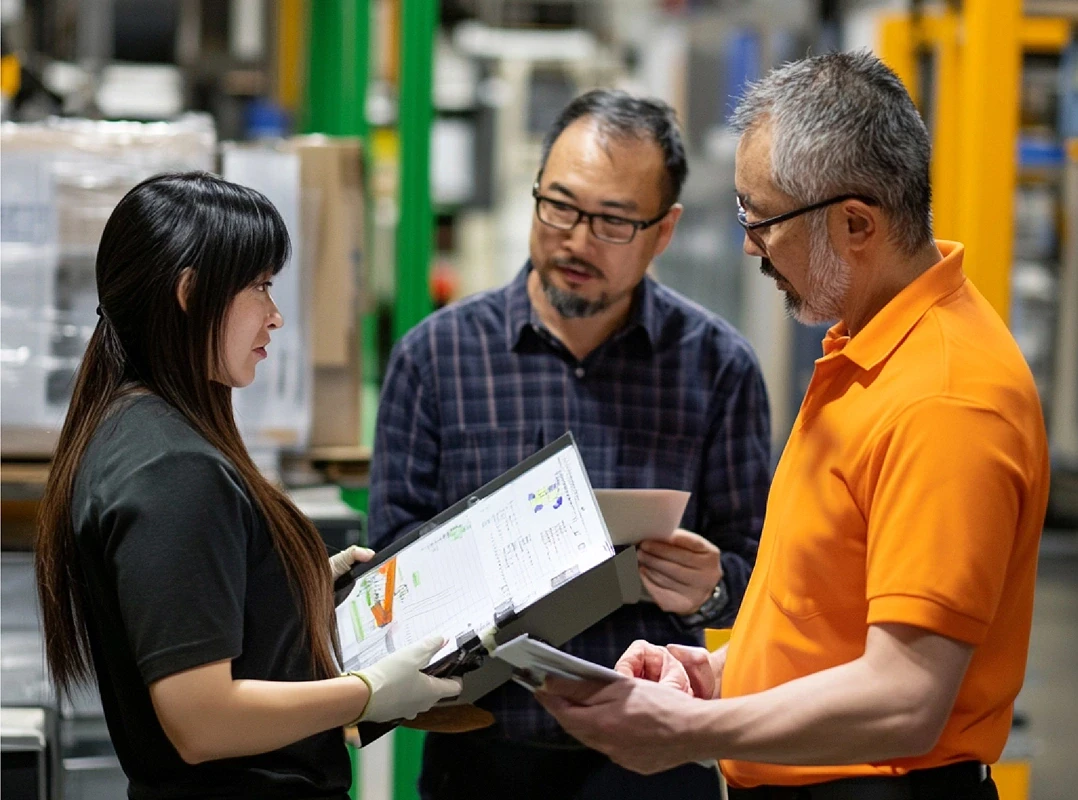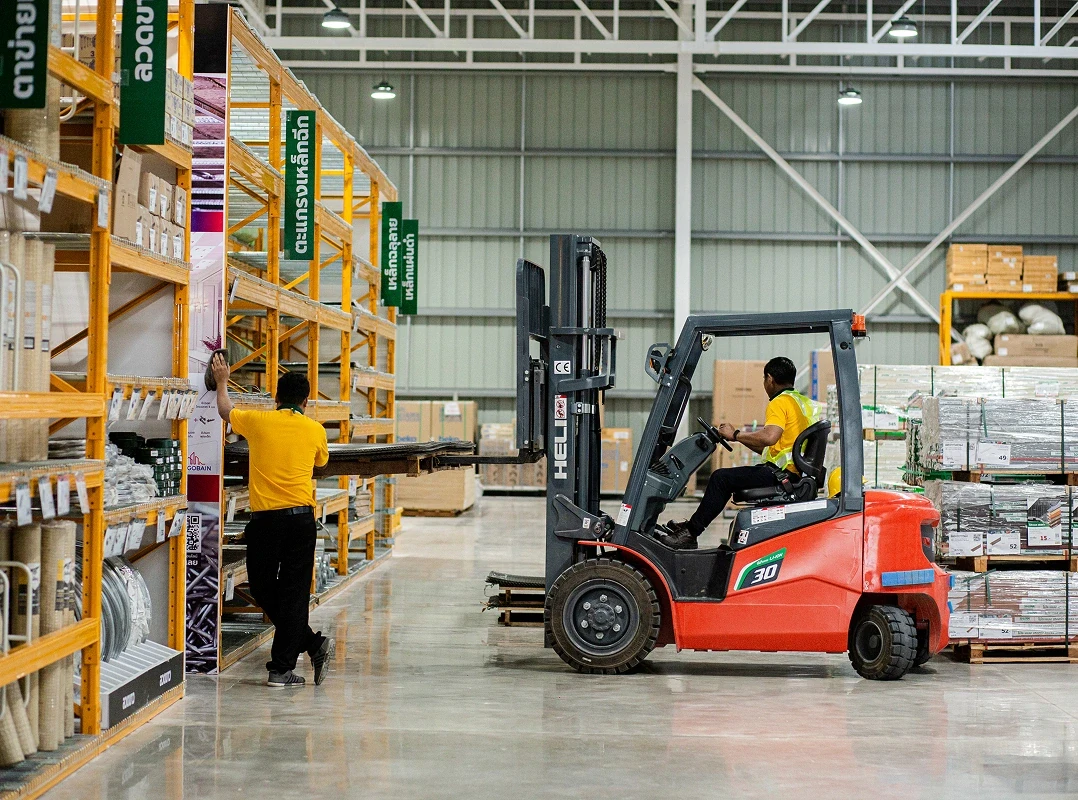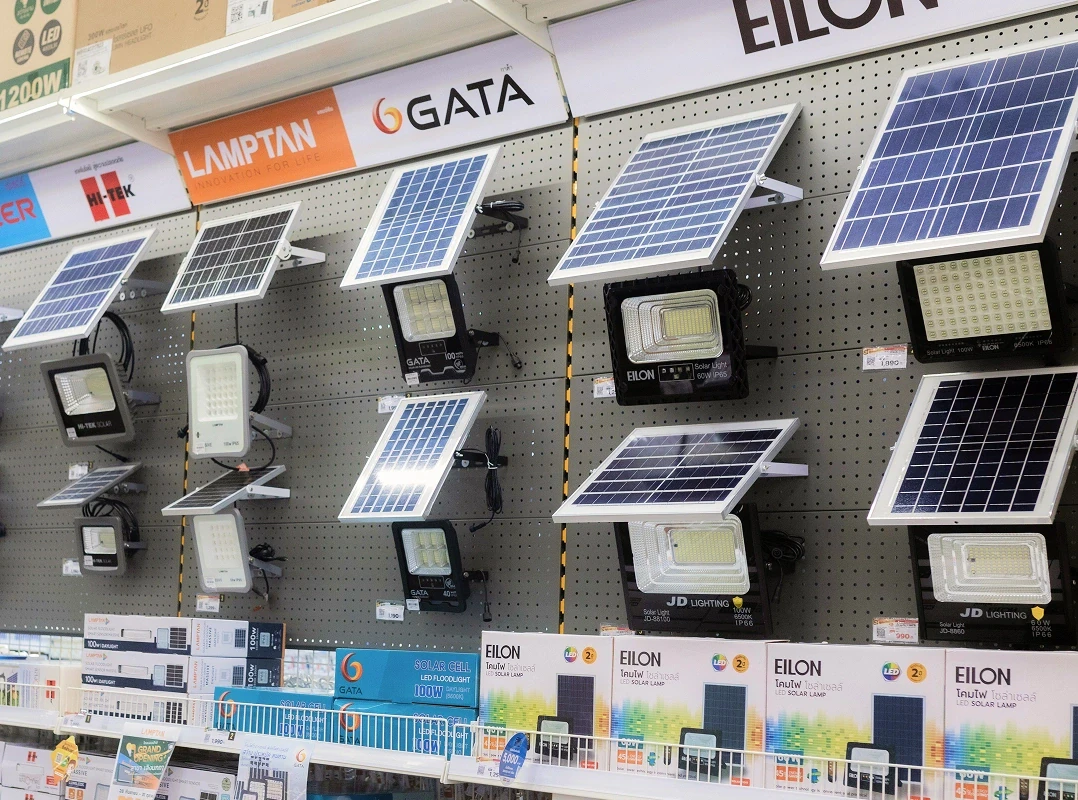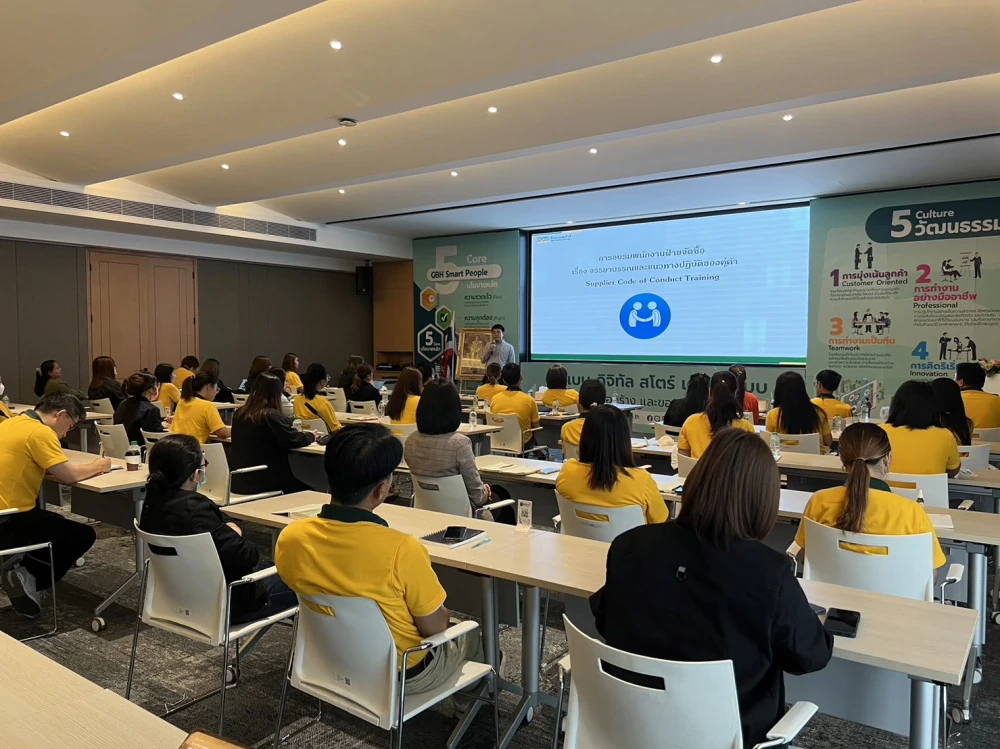
Supply Chain Management
Supporting the SDGs Goals
SDGs
Goal 12:
Goal 13:
Goal 17:
Goal and Performance Highlights
Performance Highlights
Management Approach and Value Creation
Supplier Code of Conduct
The Company has established the Supplier Code of Conduct to help suppliers and manufacturers conduct their business operations in a way aligned with the Company’s management guidelines. The Sustainability and Corporate Governance Committee is tasked to continuously review and improve the Supplier Code of Conduct to correspond to business changes, covering issues on human rights and labor, occupational health, safety and environment, business ethics, and relevant laws.
Supplier Selection and Assessment Criteria
Procurement is an important process to fix expenses and quality of products and services. Thus, the Company must have a procedure that provide the highest benefits with fairness, reasonableness, transparency, and accountability. In addition, the Company must give importance to mutually beneficial suppliers and strengthen relationships with them based on respect and trust.

The Company emphasizes the importance of selecting suitable suppliers through a fair and equitable process based on established criteria. It prioritizes collaboration with business partners, manufacturers, and contractors (“Suppliers”) who uphold ethical practices, respect human rights, and demonstrate social, community, and environmental responsibility. To affirm the Company’s commitment to sustainable business operations, the selection criteria requires the Suppliers to adhere to economic, environmental, and social (ESG) dimensions as follows:
- Maintain a reliable financial history and demonstrate potential for long-term growth alongside the Company.
- Ensure manufacturing processes are socially and environmentally responsible, complying with legal requirements, including the prohibition of human rights violations, illegal labor and labor exploitation, and environmental destruction.
- Manufacture or distribute high-quality products with mechanisms in place for quality verification.
- Deliver products in the agreed-upon quantities and timelines.
- Provide support for sales promotion initiatives and offer reliable after-sales service to customers.
- Collaborate with the Company by providing product samples, quotations, and other relevant information, including alignment with the Supplier Code of Conduct which encompasses business ethics, labor and human rights, occupational health and safety, environmental responsibility, and compliance with applicable laws and regulations.
Supplier Risk Management
The Company conducts risk assessments for both existing and new Suppliers. This operation involves analyzing their trade data and considering essential information such as the number of Suppliers, product groups purchased, order values, and Suppliers’ locations, all of which are utilized to evaluate workflows and manage supply chain risks.

Purchasing Information of Suppliers
| Product Sources | Number (names) | Rate (percent) |
|---|---|---|
| Thailand | 780 | 73.72 |
| Oversea | 278 | 26.28 |
Suppliers are identified and categorized with the criteria based on purchase volume and the difficulty of finding substitute products. This is to find out which of them are Significant Suppliers for the Company to be able to use such information for risk management.
- Significant Supplier refers to suppliers with high purchase volumes and products that are difficult to substitute. These suppliers are categorized as High Risk Tier 1 Supplier and must undergo a Supplier Evaluation every year.
- Non-Significant Supplier refers to suppliers with medium or low purchase volumes and medium or low risk, not categorized as High Risk Tier 1 Supplier.
Based on the criteria for categorizing Suppliers and assessing risks, Tier 1 Suppliers are those who have direct transactions or engage in the purchase and trade of products and services with the Company. In contrast, Non-Tier 1 Suppliers are Secondary Suppliers that do not engage in direct transactions with the Company.
In addition, the Company considers and assesses groups of Suppliers that pose environmental, social, and governance impacts (ESG Risks) to develop effective risk management plans. To ensure compliance, the Company requires Suppliers to undergo annual quality inspections and assessments conducted by the procurement team. Suppliers must also complete a self-declaration assessment through the GLOBAL SOFT system every year. Additionally, the procurement team performs on-site audits of Suppliers annually to verify the quality and sustainability of their business operations. In 2024, the company conducted on-site audits for 5 suppliers. The audits found that all 5 suppliers complied with sustainability practices covering economic, social, and environmental dimensions, and there were no violations of the Suppliers Code of Conduct.
Corrective Action Measures for Non-compliance by Suppliers

Supplier Classification Details
| Number (names) | |
|---|---|
| Tier 1 Supplier | 1,058 |
| Non-Tier 1 Supplier | 0 |
| Significant Supplier | 36 |
| Non-Significant Supplier | 1,022 |
Oversight and Assessment of Suppliers
The Company has established a Supplier Code of Conduct based on relevant guidelines, regulations, and laws at both national and international levels. It incorporates principles of corporate governance and corporate responsibility concerning the economy, society, and environment, aiming to encourage Suppliers to comply. Additionally, the Company has developed a Supplier Sustainability Assessment, conducted annually through the GLOBAL SOFT system. The assessment criteria encompass environmental, social, and governance (ESG) dimensions.
In 2024, the Company found no economic risks from suppliers. Additionally, the Company conducted an ESG risk assessment, which revealed that most suppliers have low ESG risks. In conclusion, no ESG risks have arisen from business partners.
Supplier Development
Since 2010, the Company has implemented the VMI (Vendor Managed Inventory) system, which allows Suppliers to manage their own inventory, to enhance their sales efficiency. Under the VMI system, Suppliers take responsibility for managing inventory on behalf of the Company. The key principle of VMI is granting Suppliers access to real-time sales data and inventory levels at each store. This enables Suppliers to accurately and efficiently plan production, product delivery, and promotional activities tailored to the specific needs of different locations. Suppliers are also allowed to operate purchase orders and restocking directly for the Company. Besides, the VMI system helps boost sales and improves the supply chain efficiency for both the Company and Suppliers, while ensuring consistent fulfillment of end-customer demands.
Green Procurement
The Company recognizes that Green Procurement is a process or activity that reflects its responsibility towards society and the environment. Since procurement is a crucial process for all businesses, it plays a significant role in reducing environmental impact.
The Company supports Green Procurement with a commitment to promoting the procurement of eco-friendly equipment, tools, and vehicles to minimize environmental impacts from its operations. This includes sourcing eco-friendly products and services to encourage responsible consumption and meet the demands of customers who prefer environmentally friendly products. The details are as follows:

Procurement of Environmentally Friendly Equipment, Tools, and Vehicles
- The procurement of electric forklifts for new stores has been implemented since 2020, replacing gas and oil forklifts, as well as for existing stores where forklifts have reached the end of their service life. Electric forklifts operate with minimal environmental impact, eliminating noise, odor, and air pollution.
- The procurement of electric stackers has been conducted for the purpose of moving products within the retail areas of all stores.
- There is a policy to procure hybrid vehicles for executives, as they are more environmentally sustainable than conventional fuel-powered vehicles.

Sourcing environmentally sustainable products and services
to support and address customer needs, the Company has established ESG product categories. These include energy-saving products, products aimed at reducing global warming, natural resource conservation products, health-promoting products, items designed for the elderly and disabled, and products tailored to accommodate the new way of life.


